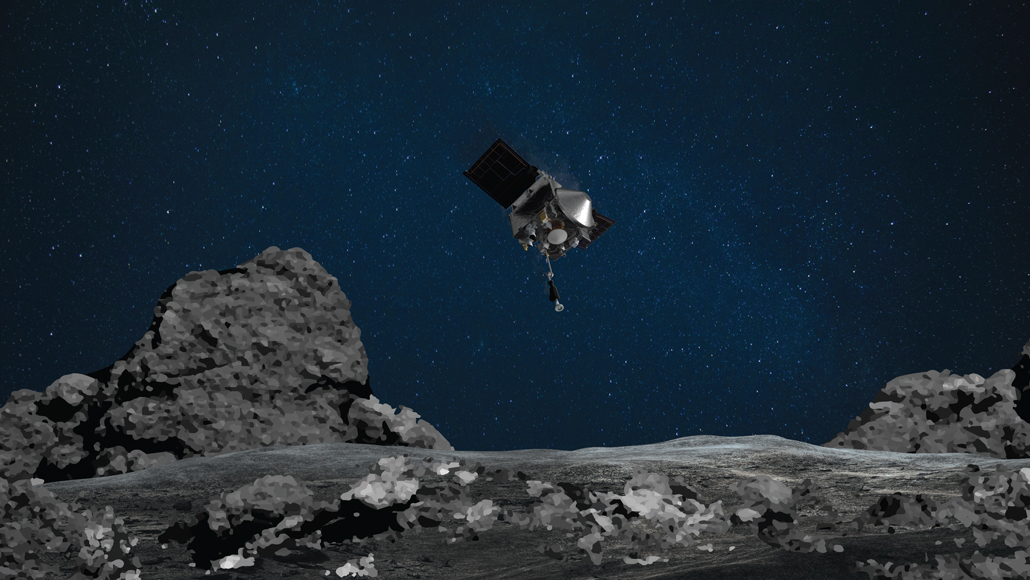NASA’s OSIRIS-REx survived its risky mission to grab a piece of an asteroid
If all goes well, the NASA spacecraft will return the samples from Bennu to Earth in 2023

This artist's illustration shows the OSIRIS-REx spacecraft reaching out toward asteroid Bennu as it prepares to grab a sample of the space rock’s dust
Univ. of Ariz., Goddard/NASA